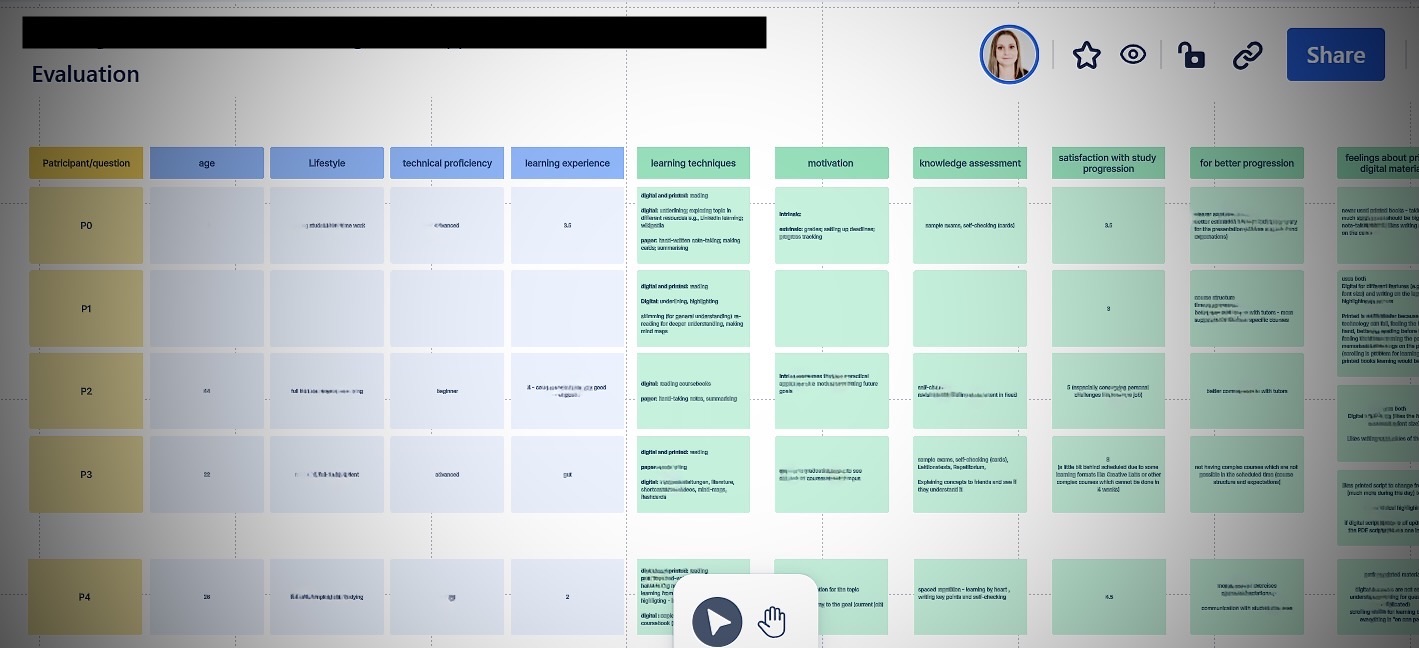Learning Experience Design Through Learner Personas

Summary
As Learning Experience Manager, I collaborated with UX designer and research team to develop behavioural-based learner personas that went beyond traditional demographics to capture study patterns, learning preferences, and educational obstacles among our 100 000+ online learners.
Responsibilities: Research (data collection, interviews, surveys)
Target audience: online learners
Tools used: miro, confluence, SharePoint
Instructional design approach: ADDIE (currently in Analysis and Design phase)
Employer: IU International University of Applied Sciences
Problem Statement
At IU, we faced a challenge with our online learning platform: despite offering various types of content, learner progression rates were below expectation, as well as course satisfaction. Initial data suggested that our approach to online learning wasn't effectively serving our diverse learner population. We needed to better understand how different types of learners interacted with our platform to create more targeted and effective learning experiences.
Solution
Working with our UX designer and research team, I focused on collecting data to develop comprehensive learner personas that would help us understand not just who our learners were, but how they learned. After collecting and analysing the data, I proposed initiatives for re-design of the current learning solutions.
Process
The research began with a structured interview guide designed to explore learners' study behaviours, motivations, and pain points in their online learning journey. I conducted 10 in-depth user interviews, focusing on understanding not just how learners used our platform, but their broader learning context and habits.

Analysis of these initial interviews revealed several key patterns, such as the preference for analog learning materials, leading to the formation of specific hypotheses about learning behaviours and preferences. These included patterns in study scheduling, content consumption preferences, and correlations between learning environment and course progression. These hypotheses served as the foundation for our broader research strategy.
Using these initial insights, I developed preliminary persona sketches that captured emerging patterns in learning behaviours and preferences. These draft personas were shared with key stakeholders, including UXD, product managers, and developers, generating valuable feedback and additional areas for investigation.
The research department then expanded our qualitative research, conducting 27 additional structured interviews that helped validate and refine the initial findings. This broader sample provided deeper insights into learning patterns across different demographics and course types.
To validate our hypotheses and gather quantitative data, we designed and distributed comprehensive surveys. These surveys helped us:
- Confirm behavioural patterns identified in our interviews
- Quantify the prevalence of different learning preferences
- Gather detailed data about learning habits and learning environment preferences
- Collect metrics on time management and course engagement patterns
This mixed-methods approach ensured our final personas were grounded in both rich qualitative insights and robust quantitative data, providing a solid foundation for learning experience improvements.
Next Phase
In the next steps, we'll map persona-specific learning journeys and design adaptive learning paths that accommodate different study patterns and preferences. These insights will guide the creation of flexible content strategies and learning activities that resonate with each learner type.



